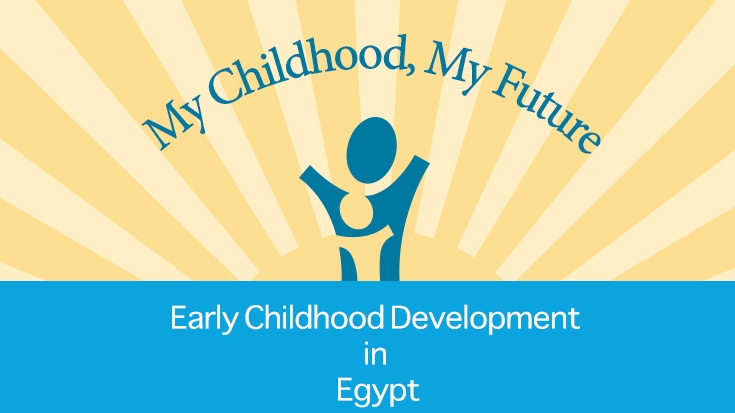The status of Early Childhood Development (ECD) in the Arab Republic of Egypt
- Despite progress in maternal health, a quarter of births (26%) did not receive prenatal care and a fifth (21%) of birth deliveries were not attended by a skilled attendant.
- Nationally, immunization rates are high (92%), but pockets of insufficient immunization rates remain.
- Stunting is a major and persistent problem in Egypt, with almost a third (29%) of children under 5 stunted.
- Only 40% of children age 3–5 have had some form of Early Childhood Care and Education (ECCE).
Figure 1. Early childhood development indicators for Egypt (%)
Source: Authors’ calculations based on Egypt DHS 2008
Children in Egypt encounter high levels of inequality in terms of their chances of healthy development, based on factors beyond their control.
There are substantial differences in the opportunities children have in terms of healthy development in their early years and in accumulating human capital. Early childhood is when cycles of poverty and inequality are transmitted across generations.
Children tend to be consistently advantaged or disadvantaged across a variety of different dimensions of ECD, and can face very different life chances based on just a few family background characteristics.
If we take a child who lives in rural Upper Egypt, in the poorest 20% of households, with uneducated parents (a “least advantaged” child) and compare that child to one whose parents have higher education, who is from the richest 20% of households, and lives in one of the urban governorates (a “most advantaged” child), we find that they have different chances of healthy early childhood development. Figure 2 presents the chances of these “least advantaged” and “most advantaged” children for healthy early childhood development.
In almost every identified area, the most advantaged child has a better chance. Only in terms of being fully immunized is the least advantaged child better off than the most advantaged child. Otherwise the least advantaged child is 36% less likely to receive prenatal care, and nearly 40 percentage points less likely to have had a trained attendant at his/her birth. The least advantaged child is more likely to die in the first month of life, or die before his first birthday. The least advantaged child is more likely to be stunted by 5 percentage points, and less likely to have been given any iodized salt by more than thirty percentage points. Finally, the least advantaged child has only a 10% chance of receiving Early Childhood Care and Education, compared to a 62% chance for a most advantaged child.
Figure 2. Inequality in the chances for healthy early childhood development (%)
Source: Authors’ simulations of chances for a “most advantaged” and a “least advantaged” child based on calculations using Egypt DHS 2008


